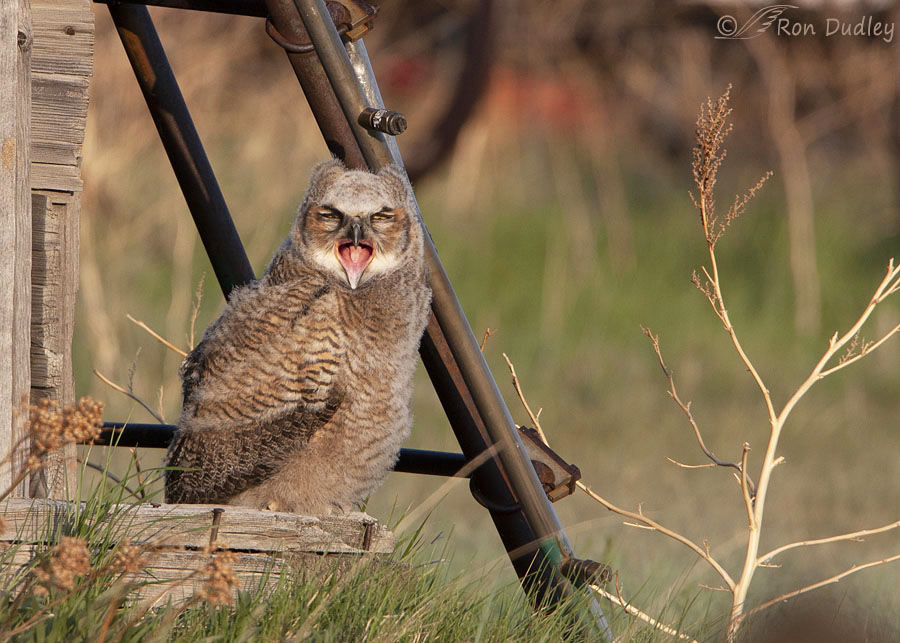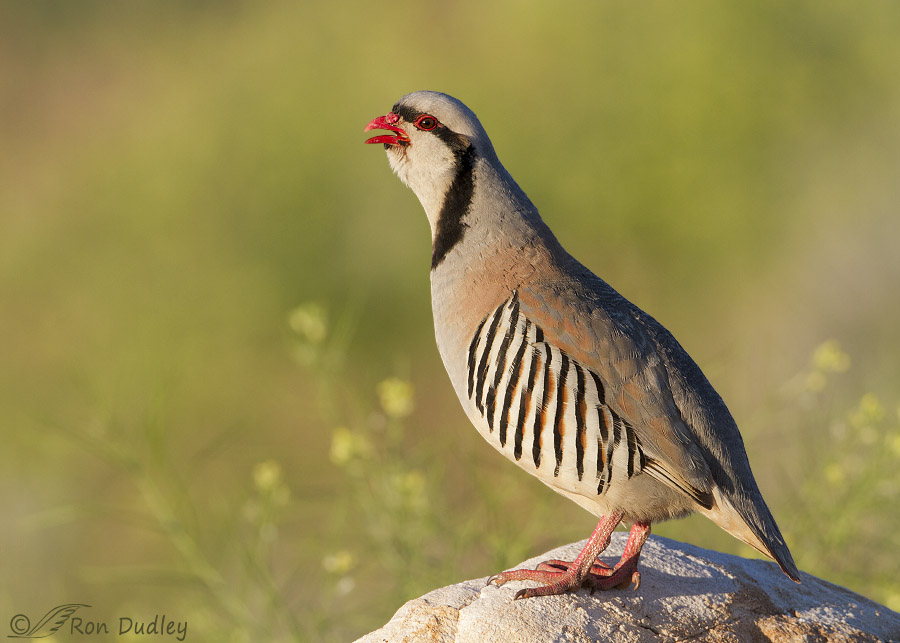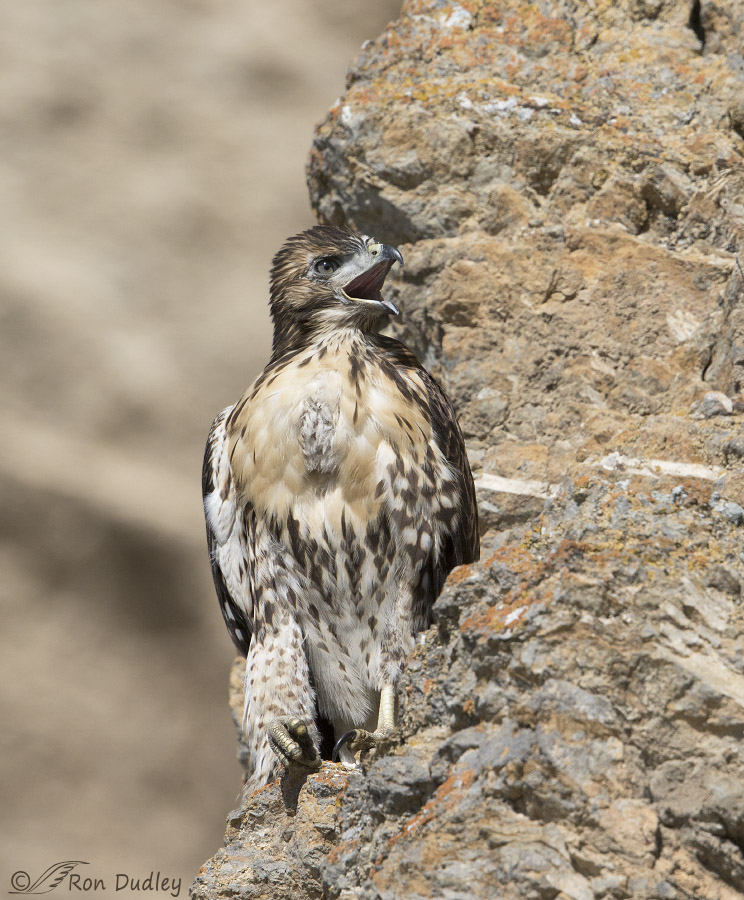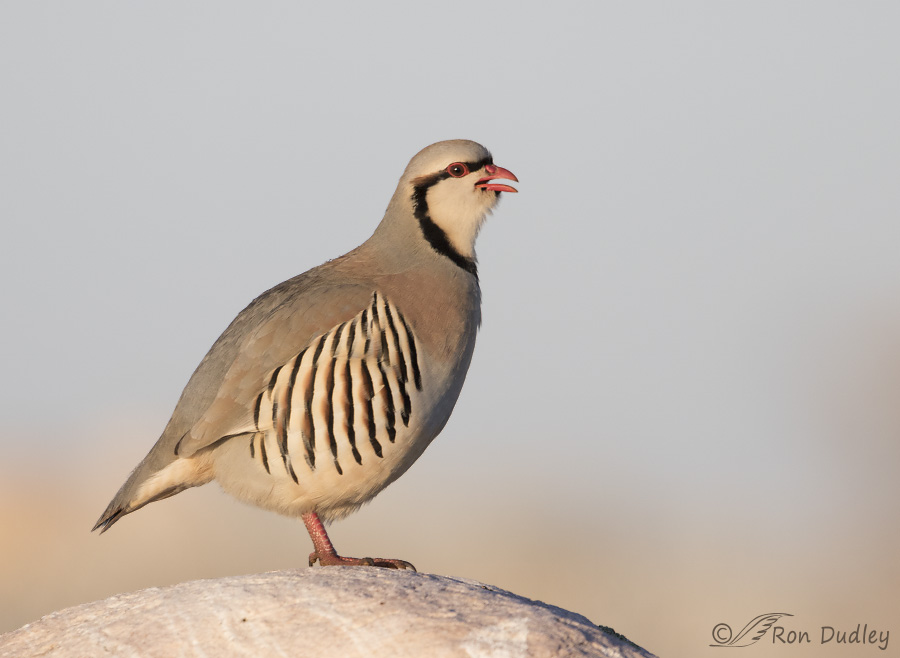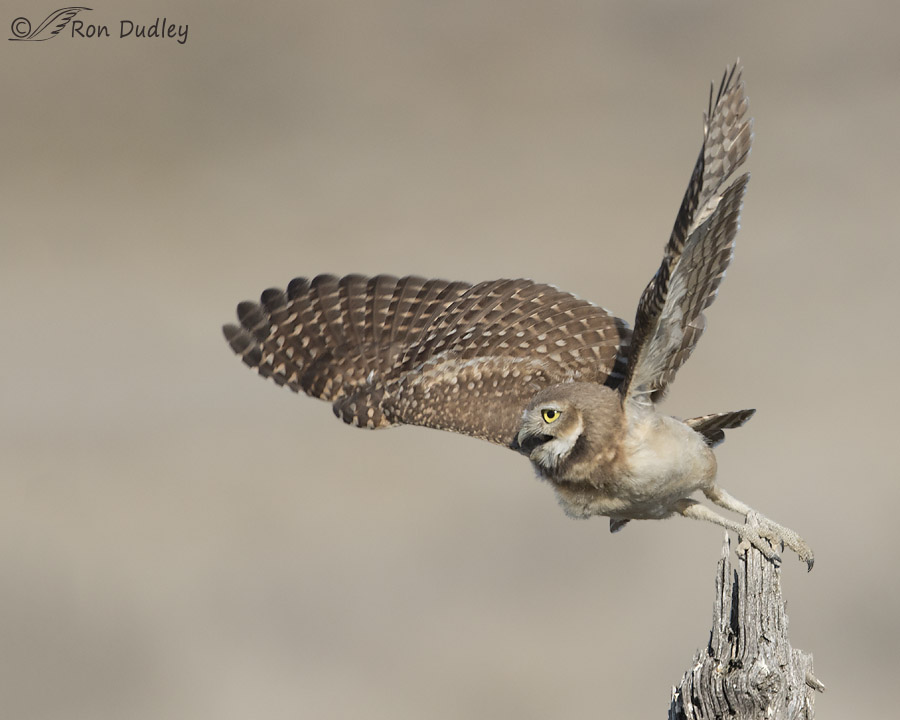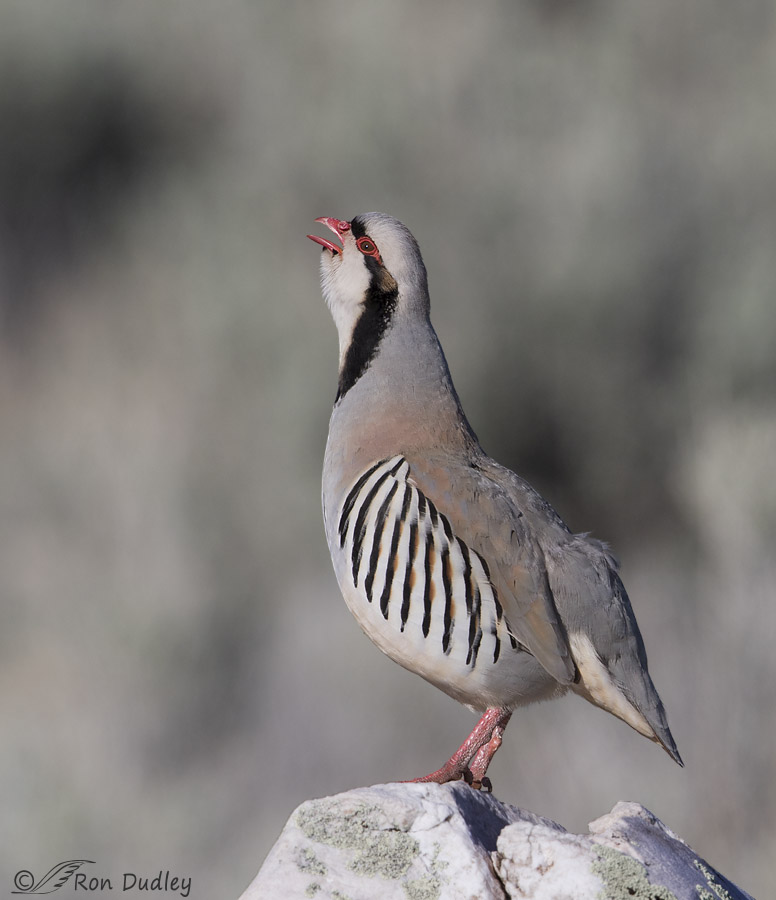Tag: calling
Chukar Calling In Warm Light
Juvenile Red-tailed Hawk Looking Fierce
Chukar Calling At Dawn
Burrowing Owl – Leaning And Screaming At Takeoff
Calling Chukar (and the frustrations of bright perches)
Chukars – More Accessible During Springtime
Our Chukars are generally easier to approach in the spring and early summer than they are the rest of the year. Right now, pair bonds are being formed and the birds seem more concerned with others of their own kind than they are about me and my pickup.
Chukar On A Snow-covered Rock Ledge
Sometimes a change of position of just a few inches can have a fairly dramatic affect on the overall “feel” of an image. That was the case with this Antelope Island Chukar. 1600, f/8, ISO 400, 500 f/4, 1.4 tc, natural light I found the bird on a rock ledge and slightly above me which gave an almost eye-level perspective that I like. Occasionally it would call, as they’re very prone to do. 1600, f/8, ISO 400, 500 f/4, 1.4 tc, natural light But then it began to walk a short distance to my right (I’m always surprised that the bottoms of their feet are yellow)… 1600, f/7.1, ISO 400, 500 f/4, 1.4 tc, natural light which brought the snow-covered hillside in the background into play. At first there was a mix of snow and blue sky back there… 2000, f/7.1, ISO 400, 500 f/4, 1.4 tc, natural light but then I deliberately raised my window a couple of inches (as usual I was shooting from my pickup) to take the blue sky out of the picture. And the bird obliged me by calling once again. Most of the snow is finally gone from the island now. Even the roads to the Frary Peak trailhead and White Rock Bay are open – they’ve been closed for months due to snow. Hopefully that’s a sign that the curlews and Willets (and other spring birds) won’t be far behind. Hope so – it’s been a long dry spell on the island. Ron
Sandhill Crane Take-off Sequence
On a beautiful spring morning in May of 2011 we found a small group of Sandhill Cranes on a pond as we approached Bear River Migratory Bird Refuge. We were some of the first folks on the access road and our careful approach made two of the birds a little nervous so they decided to vacate the area. I believe they were a mated pair. I got my pickup stopped and my lens aimed just after the first bird began to take off. 1/2500, f/6.3, ISO 500, 500 f/4, 1.4 tc I believe this to be the slightly larger male who took off first. The unconventional composition is meant to highlight the water splashes behind the bird. If you’ve never heard the distinctive, penetrating and very loud bugling calls (also called “trumpeting”) of this species you’re really missing something. As is typical of these cranes, these two were calling during lift off and just looking at these images has that haunting sound bouncing around in my head. These cranes have an unusual throat anatomy that allows them to make such resonating sounds. The trachea extends and coils down the long neck and well into the sternum. This unique anatomy “expands the amplitude and alters the pitch of the voice by the addition of harmonies”. Until these birds are 9-10 months old they can produce only a series of trilled whistles and peeps but as they mature their tracheas elongate and coil intrasternally which allows them to develop the adult voice. If you’re curious about their call, check out both the “unison call” and…
Lickety-split Chukar
We haven’t seen many Chukars recently but yesterday we found a small covey feeding at the base of several rabbitbrush on the north end of Antelope Island. 1/3200, f/6.3, ISO 500, 500 f/4, 1.4 tc, natural light Most of them were pretty skittish but the sentry bird was standing watch on top of a snow-covered boulder as the rest of the birds slowly wandered away. The sentry posed for us for several minutes. 1/3200, f/6.3, ISO 500, 500 f/4, 1.4 tc, natural light It called out to the rest of the flock twice. 1/2500, f/6.3, ISO 500, 500 f/4, 1.4 tc, natural light Chukars are often reluctant to fly and prefer to scurry on the ground to safety. In an instant the bird accelerated up the rock… 1/2500, f/6.3, ISO 500, 500 f/4, 1.4 tc, natural light and down the other side. It was really moving. 1/3200, f/6.3, ISO 500, 500 f/4, 1.4 tc, natural light In this last decent shot I got in the series, the bird appears to be sledding on top of the snow as much as it is running through it. I really enjoy photographing Chukars in the snow this time of year. For much of the fall and early winter these birds are pretty scruffy looking but now their plumage appears bright and fresh again. Ron


